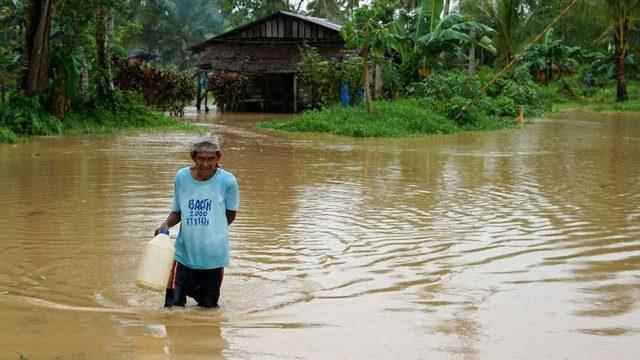According to a new study, the agreement reached by world leaders at the COP26 Climate Summit could limit the world’s warming to 2 degrees by the end of this century. However, experts say it is almost impossible to keep the warming at 1.5 degrees, which is the target under the Paris Climate Agreement.
The research, published in the scientific journal Nature, indicates that global warming will increase by 1.9-2 degrees if countries implement their COP26 commitments “completely and in a timely manner”.
However, scientists state that the probability of the world staying below the 1.5 degree warming threshold targeted by the Paris Climate Agreement drops by 6-10 percent.
World leaders attending the COP26 Climate Summit held in Glasgow, Scotland in November 2021 signed an agreement that includes a set of measures to reduce carbon dioxide emissions as soon as possible.
Some countries have set longer-term plans towards the net zero carbon target. One of them was India, which has pledged to reach net zero by 2070.
Experts state that the warming of the world by more than 1.5 degrees will be very dangerous for the whole world, especially for island countries and developing countries. It is reported that if the warming is not brought under control, we will face a series of disasters and massive destruction such as drought, rising sea levels and the complete extinction of many living species in less than a century.
During COP26, Climate Activity Monitoring (CAT) researchers studied leaders’ goals and commitments, finding that if all are implemented in a timely manner, global warming will decrease.
But the important question is how much warming will decrease.
Short and long term goals
This new peer-reviewed study continues to analyze the CAT researchers’ findings.
Researchers examine the short-term targets of the countries participating in COP26 for the first time until 2030.
Taken together with these targets, the temperature rise is expected to climb to 2.6 degrees Celsius by the end of this century, meaning that millions of people will face air disasters.
However, it shows that if countries continue to work towards the net zero target in the long term, it will have a big impact on warming.

“This is the first study to indicate that we are more than 50 percent likely to keep global warming below 2 degrees Celsius if all our plans are implemented,” says Professor Malte Meinshausen of the University of Melbourne, lead author of the study.
“However, we need to seriously accelerate our efforts so that we do not exceed the 1.5 target by a large amount this century.”
Researchers state that it is essential to provide material and technical support to developing countries to reduce their carbon emissions.
However, even if all targets are met, it is stated that the probability of being limited to the 1.5 degree threshold of the Paris Agreement is less than 10 percent. Experts say that the main reason for this is the increase in global carbon emissions in the short term.
13 percent increase in carbon dioxide emissions
Scientists say carbon dioxide emissions should decrease by 45 percent by 2030.
But this study finds that emissions will rise by 13 percent over the next 8 years.
“The most important thing for us right now is to reduce carbon emissions by 2030,” says Christophe McGlade, a co-author of the study at the International Energy Agency.
“Reducing speed limits on roads, for example, will reduce oil demand and thus reduce carbon dioxide emissions. It is possible for governments to introduce such practices that will support their long-term goals.”
“The 1.5 degree threshold is almost impossible”
Some experts interpret the report differently, arguing that we need technologies that extract carbon dioxide from the atmosphere to control global warming.
Glen Peters, who is not affiliated with the research but works in this field and works at the Oslo-based International Center for Climate Research, says, “It is very difficult to put in writing the message that the 1.5 degree threshold is now almost impossible, and that the only way to achieve this goal is to extract carbon from the atmosphere.”
